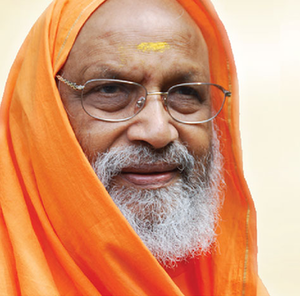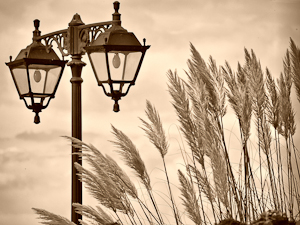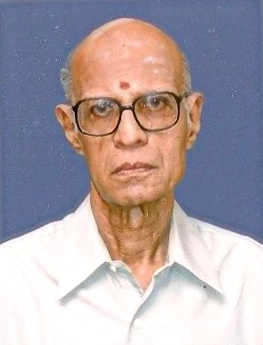PUJYA SWAMI DAYANANDA SARASWATI –
a brief biography by N. Avinashilingam.
SPECIAL FIRST ANNIVERSARY EDITION
This short biography may be freely downloaded from Arshaavinash.

PUJYA SWAMI DAYANANDA SARASWATI –
a brief biography by N. Avinashilingam.
SPECIAL FIRST ANNIVERSARY EDITION
This short biography may be freely downloaded from Arshaavinash.

Homage to Pujya Swamiji
D.Venugopal
Pujya Swamiji’s uniqueness has already been the subject matter of a book by that name, published in October 2008 and released by Pujya Swamiji himself. However, certain very significant details of his life and teaching need to be highlighted.
I
Right from his childhood, Pujya Swamiji was distinctively different from others. He was fearless by nature. He did things that others never dared to do, like catching any snake by its tail. During those days, owing to the anti-Brahmin movement, the school boys used to rag the Brahmin boys, who were conspicuous with their tufts. Pujya Swamiji also had a tuft. He once caught off guard a tough ragger and punched him so hard that he fell into a ditch. Also, for fear of being ragged, the Brahmin boys would not opt for Sanskrit as the second language. Unmindful of the repercussions, Pujya Swamiji chose Sanskrit. He did not also take lying down the ridiculing of religious practices by his class mates but countered them by thinking out the plausible reasons for those practices. They could never outwit him in the arguments that ensued. Continue reading
 Most people (or at least those who visit this website!) will be aware that the dates for Shankara’s birth and death are a trifle hazy. It is generally assumed that he lived around the ninth century A.D. and had a fairly short life, dying at around the age of 32. Fewer people will know, however, that one of the principal Maths – namely that at Sringeri – actually has his date of birth as 44 BCE. And 509–477 BCE are the dates based on records from other Maths!
Most people (or at least those who visit this website!) will be aware that the dates for Shankara’s birth and death are a trifle hazy. It is generally assumed that he lived around the ninth century A.D. and had a fairly short life, dying at around the age of 32. Fewer people will know, however, that one of the principal Maths – namely that at Sringeri – actually has his date of birth as 44 BCE. And 509–477 BCE are the dates based on records from other Maths!
In fact, there are endless discussions in the academic world over details such as these. The sort of argument that is used takes a quotation from some writing attributed to Shankara, in which another person, place or quotation is used. If the date of that cited material is known, then it can be concluded that Shankara must have been living at a time later than this. (Such arguments enable the BCE dates to be discounted.) Unfortunately, in most cases, the dates of the cited person or place are not known either! Basically, Indians in the past have not been particularly good at recording their historical events. Plus, enlightened sages are not in the slightest bit interested in having their name associated with any recorded words or in having anyone record their biographies. Continue reading
 Sri S. N. Sastri (1922 – 2015)
Sri S. N. Sastri (1922 – 2015)
It is with sadness and regret that we have to announce the death of Sri S. N. Sastri, one of the oldest and most respected scholars of Advaita. Sri Sastri was a moderator of the Advaitin forum for as long as I can remember. Recently, he had mostly ceased to participate in discussions as he found them very tiring but he remained an authority to whom we often turned for guidance – I consulted him on the topic of eka jIva vAda earlier this year and we were last in touch regarding ‘A-U-M’ only a couple of months ago.
To read a brief biography, bibliography and a selection of his writing, see http://www.advaita.org.uk/discourses/s_n_sastri/s_n_sastri.htm.
 Hi, first I`d like to introduce myself, so you know where I am coming from and what you might expect from my blogs.
Hi, first I`d like to introduce myself, so you know where I am coming from and what you might expect from my blogs.
My name is Sitara, I am German, living in Cologne, Germany. I was born 1954 and, as all of us writing here, have been on a spiritual quest all my life. This started in my childhood when I, born and raised loosely protestant, decided to convert to Catholicism when I was 13. After having gone through the confirmation classes of our protestant church and many inspiring discussions with the minister, I to his dismay, denied to become confirmed. I had been the only one interested in the topics while all the others – who actually became confirmed – had more or less slept through the classes. Continue reading